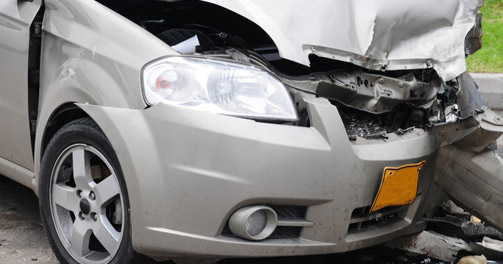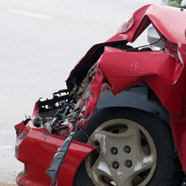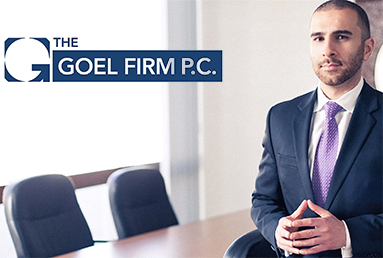Unexpected Losses in Vehicle Accidents: Loss of Use and Diminished Value

A party who is involved in a vehicle accident may have multiple types of claims depending on the circumstances. The claimant and his or her family member(s) may have claims for medical expenses, property damage, loss of wages, wrongful death, loss of consortium, and possibly others. Claimants, however, seeking compensation for property damage may not be aware of personal property claims for loss of use and diminished value of a vehicle. These two types of claims can be particularly significant when the damaged vehicle was relatively new and/or expensive at the time of the accident. This article will help explain both types of claims.
What is Loss of Use?
The owner of personal property that has been wrongfully damaged by the act of another is entitled to recover damages for the loss of the use of that property. This means the claimant must be compensated for not having his or her personal property readily available as a result of the negligence of a wrongdoer. This particular type of claim is in addition to a claim for the physical damages to the vehicle. It makes no difference that the claimant’s vehicle is used solely for pleasure. Loss of use damages are generally measured by the period of time reasonably required to make repairs to the damaged vehicle, and the rental value of a similar vehicle which the claimant can rent for use during the repair period of the vehicle. The measure of damages for the loss of use is governed by the Judicial Council of California Civil Jury Instructions (CACI) 3903M. Loss of Use of Personal Property, which states:
“To recover damages for loss of use, [plaintiff] must prove the reasonable cost to rent a similar [personal property] for the amount of time reasonably necessary to repair or replace the [personal property].”
If a claimant attempts to recover for loss of use, he or she will be unable to recover for any rental expenses. In other words, a claimant cannot recover for both types of claims. The amount recoverable can vary significantly depending on the necessary time required to fully repair a claimant’s vehicle and the model and value of the vehicle before the accident.
What is Diminution in Value?
In addition to claims for damages and the loss of use of a vehicle, a claimant can also make a claim against a third-party for the diminished value of the personal property. Under tort principles, an injured party must be “made whole” by the wrongful party. With respect to the physical loss or damage to personal property, repair or replacement of the damaged property is generally sufficient to return the property of the injured party to its “pre-loss” condition. However, sometimes this may not be sufficient, especially when there is an attempt to repair a motor vehicle.
The measure for damages for personal property that has been damaged by a wrongdoer is governed by the Judicial Council of California Civil Jury Instructions (CACI) 3903J. Damage to Personal Property (Economic Damage), which states:
“To recover damages for harm to personal property, [plaintiff] must prove the reduction in the [personal property]’s value or the reasonable cost of repairing it, whichever is less. [If there is evidence of both, plaintiff is entitled to the lesser of the two amounts.]
To determine the reduction in value, you must determine the fair market value of the [personal property] before the harm occurred and then subtract the fair market value of the [personal property] immediately after the harm occurred.
‘Fair market value’ is the highest price that a willing buyer would have paid to a willing seller, assuming:
1. That there is no pressure on either one to buy or sell; and 2. That the buyer and seller are fully informed of the condition and quality of the [item of personal property].
[If you find that [plaintiff]’s [personal property] cannot be completely repaired, the damages are the difference between its value before the harm and its value after the repairs have been made, plus the reasonable cost of making the repairs. The total amount awarded must not exceed the [personal property]’s value before the harm occurred.]”
The last paragraph of the jury instructions refers to situations in which the vehicle cannot be completely repaired. There are situations when a vehicle might be considered completely repaired but is treated in the marketplace as less valuable than its pre-accident state because of a prior accident. Such diminution in value is attributed to legitimate concerns that when a vehicle is repaired, it never fully returns to its pre-accident condition. Manufacturer specifications, especially as precise as those of car manufacturers, can never be reproduced by any body shops, regardless of their expertise or certifications.
Diminution in value manifests when a potential buyer is presented with two same car models on a dealer lot. One vehicle was damaged but “properly” repaired, and the other was never involved in an accident. When both vehicles are available for the same price, which one does the buyer prefer? The reality is that a buyer will choose the vehicle that has no history of prior accidents because buyers realize that the vehicle can never be repaired to manufacturer settings and specifications. Vehicles with adverse history will only attract potential buyers when they are listed at a significant discount. In fact, this is precisely why dealerships are generally hesitant to even offer such vehicles on their lots. This difference is what is known as “stigma damage” or “diminished value” and may significantly drive down the value of a vehicle in the marketplace.
More so than ever, prior accidents will affect the market-value of a vehicle due to the increased popularity of vehicle history reporting services such as Carfax. According to its website, Carfax receives data from more than 34,000 different sources and has a database which contains over 6 billion records.
Depending on a vehicle’s make, model, and year, claims for loss of use and diminished value can be very significant. In such situations, claimants should always seek the advice of a counsel who has both the experience and willingness to make both claims on behalf of a client.
Posted by Sami Goel, THE GOEL FIRM, P.C.
qweradminqwer







